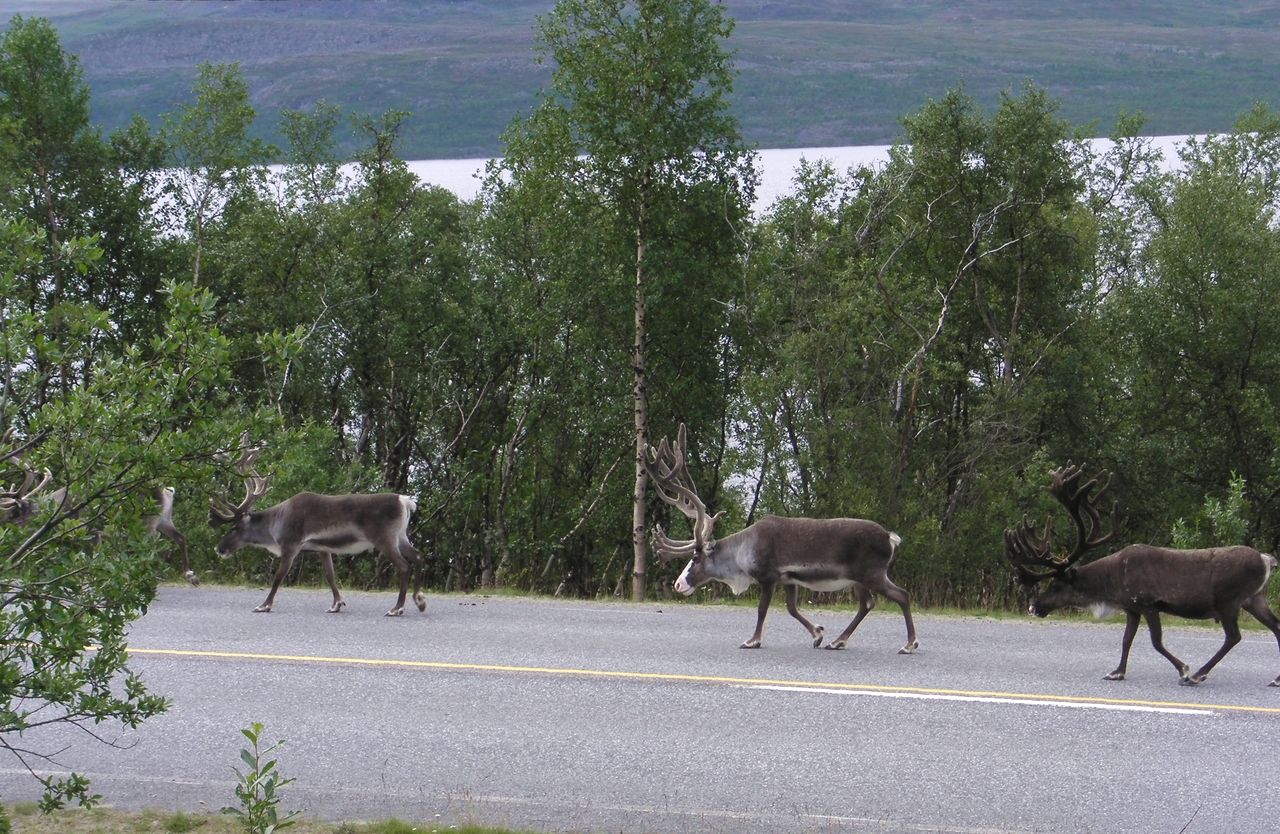These reindeer seem to master the traffic rules in Kilpisjrvi,Finland.
The city of Troms, Norway.
A Sami teepee in Abisko, Sweden.
Borselv village by the Barents sea.
Introduction
The mystical, exotic Lapland where reindeers roam onmountains and in vast forests, where the Northern Lights shed light on purewhite snow during the dark winter, and where the sun never sets in summer is aland of Sami people. Lapland and the Sami welcome travelers who love the greatoutdoors, untouched nature, and peaceful life in small villages.
Except for a few small towns and villages, practically thewhole vast area of Lapland is wilderness where fells, rivers, lakes, marshland,and forests provide a vast playground for the wildlife. Reindeer herders maynot be thrilled find traces of bears, wolves, or wolverines nearby, whereastourists would be excited to spot a predator in the wild (it is extremelyunlikely to encounter them).
Hiking on fells, along river canyons or across marshlandsis a fabulous way to enjoy Lapland. Mountainbikers have also discoveredLaplands trails. In winter, skiing and dogsledding bring visitors to skiresorts and cottages. Fishing in rivers, lakes and the sea is a popularactivity in summer among locals and visitors alike.
A popular method for tourists to absorb the landscapes andsceneries of Lapland is road travel. Roads maybe few, distances long andservices infrequent, but very few destinations in the world has the samevariety, wildlife and rough beauty as Lapland. Nordkapp (North Cape) is themodern pilgrimage destination located at the end of the world; it is thenorthernmost point of Europe. In Nordkapp, the road ends into the Arctic Ocean.
Touring Lapland by car, motorbike or bicycle rarelypresents a dull moment. Majestic, often lush, inland fell sceneries change torough and scarce Arctic landscape in the north as the Arctic Ocean gets closer.Following fell rivers that flow west introduces yet another scenery as thelandscape transforms from fells to steep mountains and gorges, andpicture-perfect fjords provide shelter for residents from the Atlantic Ocean.
Lapland is all about nature and respect for theenvironment. People who live in Lapland say they have eight seasons: firstsnow, Christmas, frosty winter, crusty snow, departure of ice, midnight sun,harvest season and colorful autumn. The traditional life and livelihood hasbeen tightly coupled with seasons that have determined how reindeers havebehaved, and how hunting and fishing have been conducted.
For visitors, the peak seasons are summer, colorful autumn,Christmas and crusty snow (spring).
Lapland covers a vast area in northern Scandinavia. Thenorthernmost parts of Finland, Norway and Sweden make up the region that isreferred to as Lapland in this book. Geographically, the area north of theArctic Circle is regarded as Lapland, which included the north-west corner ofRussia as well. The Russian Lapland is not covered in this book. The focus ison the Scandinavian Lapland alone.
This book is organized by key places, national parks,sights, and activities. As a large and diverse region, there are so manyattractive destinations, pretty sights, and activities to experience that itmay feel overwhelming when you start planning your trip. Top 5 lists help youin the planning process because they rank the most popular and spectacularplaces, sights, activities, and touring routes.
All the names of places have been written in locallanguages in this book, because thats what you will see in each country.Sometimes, you may spot road signs and other texts in Sami language as well,but the second language on the signs is always the national language.
The focus of this book is on the sights, nature,attractions, landscape, activities, Sami culture, touring, and managing travel inthis large region. Lapland is all about the great outdoors, and less aboutshopping, Michelin-star restaurants, urban life or luxury hotels. Thats whythe book addresses wildlife, national parks, everymans rights, fells andfjords rather than malls, hotel gyms or restaurant reviews.












